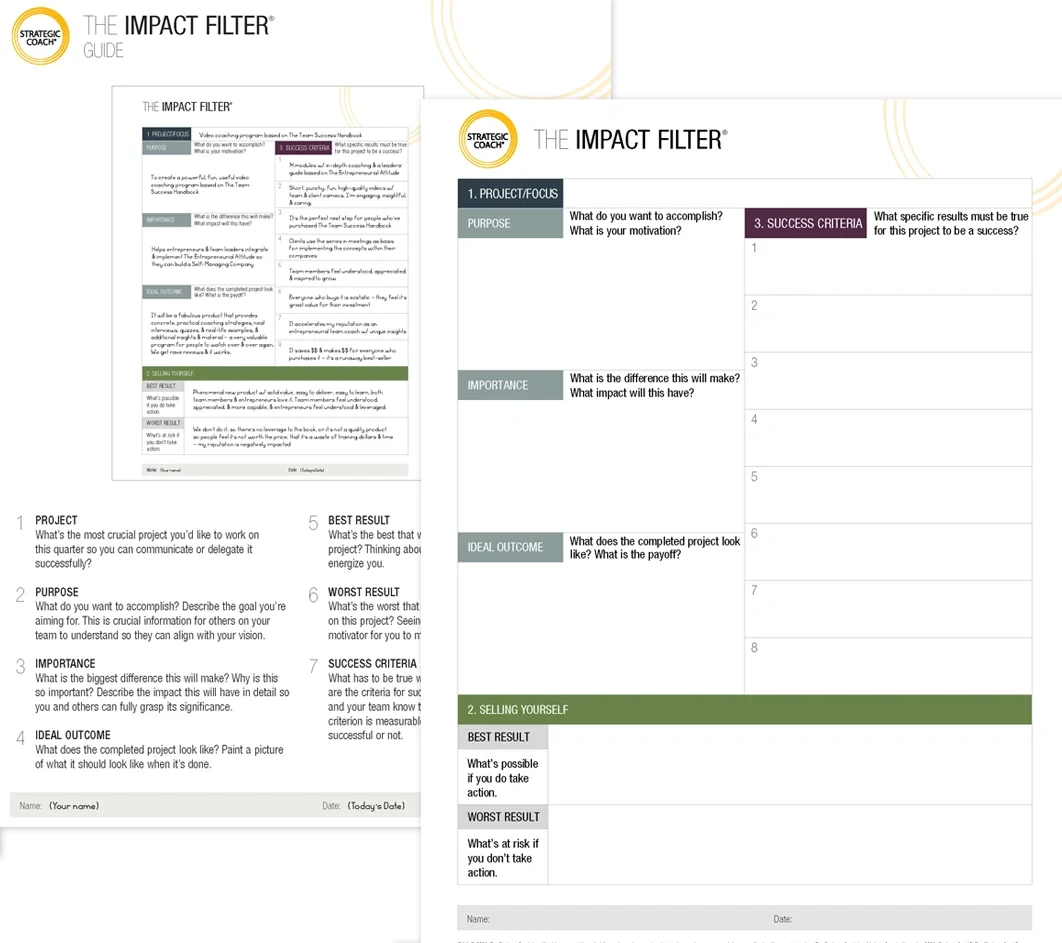Virtual Team Building Comes Into Its Own
We invited Adrienne Duffy, a long-time Strategic Coach associate coach and successful entrepreneur, to guest blog for us. Adrienne has a passion for helping others to grow, which shows up in her business, Big Futures Inc., where she helps entrepreneurs and their teams work together to grow their revenue exponentially. Since 1995, she has coached thousands of entrepreneurs through the Strategic Coach Program and is dedicated to helping others create the level of success she’s achieved in her own business.
When Tim Ferris came out with his book The 4-Hour Work Week, a lot of people latched onto his idea of getting jobs done quickly, at a reasonable commodity price, by people overseas.
That’s one option, but I was inspired by the possibility of something different.
At Strategic Coach®, we help people create a Self-Managing Company, and a virtual team struck me as a great way to achieve that, since these people would be already accustomed to organizing themselves like entrepreneurs. It’s like having Unique Ability on tap—accessing capability as you need it from accountable, self-managing team members.
Sorry, That’s Not What We’re Looking For
We probably did a solid year of research, trying to find what worked for my business, and that was extremely informative of the virtual team landscape.
For instance, if your virtual team members are overseas, there might be language barriers or time-zone differences. If you’re hiring a virtual team member locally, do you want a hybrid approach with some face-time and some virtual time? If they’re going to interface with your clients, how will that play out?
I also discovered there are a lot of “wannabes” who like the idea of being a virtual team member because they see it as a freedom formula.
Here’s a “worst” story: We called one referral from a virtual assistants’ network, and as we spoke with her, she triggered some alarm bells.
“Oh yeah,” she said, “I’ll work for next to nothing, ‘cause I really want to learn about this.” Um, on my time, with my clients?
“And I can work from home until I have my baby, then be back to work in three months. I’ll work around naps, etc.” Very well intended I am sure, but clearly not what we were looking for.
Entrepreneurial-Minded Virtual Team Members
There are great virtual team members out there, though, who approach this like entrepreneurs: They get it, they’re accountable, they have great virtual systems in place, and they want to serve you, their client. Isn’t that what we all want, to mutually serve each other to a higher good, which is realizing our vision together? I’ve found that is possible.
Ultimately, I discovered a company with the kind of mature business model I was looking for—DemGen. They assign you a project manager who can take you through a process to establish your three-year vision; then, they build a virtual team to meet the short- and long-term goals you’ve stated. If there’s turnover, they handle it and present you with other pre-vetted people to choose from.
For me, that was perfect. I pay more for it, but it was worth the investment—it simplified the complexity so we could continue to multiply our results!
Be Clear About The “Why”
I probably walked the harder path, going through the process of qualifying and disqualifying options, but my vision was clear, so I was up for the challenge. If you understand the big “Why?” of where your organization is going, the “What?” and “How?” become much easier.
Do you just want someone for a micro-project, like creating an Excel spreadsheet or designing a logo? Or are you looking for a consistent team to carry you into the future? Do you want a virtual team to assist you in working on your future company while maintaining the current company? Perhaps you’re going through a transition or have hit the Ceiling of Complexity™ and need some solid capabilities for the short term. Chunk out the elements required, and feel free to ask people how they organize their time and structure their virtual teamwork. If you know another entrepreneur who’s been successful in working with a virtual team, talk to them. This really helped me to develop a best-case scenario to work from.
Use Technology To Help Multiply Your Results
We also implemented “multiplier technologies” that let us work cohesively with a virtual team—programs like Highrise and BaseCamp. We had things in the cloud before it was even called that, because we’d hired a great IT company who built this freedom and flexibility into our organization.
A virtual team can help you establish this, too, because many of them have worked this way with other clients. Project management software and access to shared files you can see flowing back and forth—these markers give you confidence and a framework for communication. So you’re not abdicating anything; you’re simply managing less and leading more—which is exactly how a Self-Managing Company works.
Working with a virtual team has been a learning curve, but I’m excited by how much freedom I have now to pursue my future company while maintaining the present company that’s funding the future. It also gives me the flexibility to look at “bigger future” goals like living in two locations. I can do all sorts of things now that I couldn’t have done without a virtual team in place.
What about you? Have you gone through this process, too? How did it work out for you? Or perhaps you’ve been considering it but haven’t tried it yet. What’s holding you back? Tell us in the comments!








